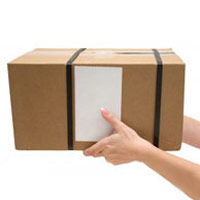 OK, so your business has been launched and your products are pouring off the lines – but how do you get them to your customers? Time to get your delivery system up and running…
OK, so your business has been launched and your products are pouring off the lines – but how do you get them to your customers? Time to get your delivery system up and running…
If your business involves the production and/or sale of tangible products rather than services or software, you somehow have to get those products to your customers. One way of doing this, of course, is through physical premises – but if you’re not selling to consumers, or if your business only produces one or two different items, investing a significant amount in a shop isn’t a viable strategy, and you’re going to have to get your products through to your buyers in some other way.
The method you choose obviously depends a great deal on the nature of the product you’re selling. A number of factors should go into your decision-making process including, but not limited to, the size, weight, fragility and frequency of your packages; the locations you need to supply; whether or not your products are hazardous or subject to regulation for any other reason; how regular your delivery requirements are throughout the year; and your and your staff’s other travel commitments. It may be that the solution you come up with involves a combination of various different delivery methods.
If your business involves supplying relatively low volumes primarily to local customers (for example, sandwiches to local businesses) you may find it makes most sense to deliver your products yourself, either in your car or a vehicle such as a van bought for the business. This is the most economic delivery method assuming you’re not taking up time which would be better invested growing your business elsewhere (ie, in the sandwich business, making more sandwiches or winning more customers).
However, once you have built up a sufficiently large customer base making even local deliveries yourself could prove impossible, so you might need to take on a delivery driver or use a local delivery service. Remember, if you’re doing the work yourself your vehicle becomes subject to certain tax and other legislative regulations so take all necessary advice before starting out.
If your customers aren’t all in your local area, however, or if your sales volume surpasses a level at which you can cope in-house, you will need to look at engaging a mailing or delivery firm. This could be the Royal Mail or one of a number of other organisations offering a huge array of logistics services. As the postal arena has opened up in the last couple of decades, many players have entered the fray and which one you choose shouldn’t just depend on their price-competitiveness: some specialise in hazardous deliveries, others might have superior reputations when it comes to handling fragile items etc. As always, research is required – along with careful planning as to your future needs (if you’re planning on expanding internationally in the near-term for example this should play into your logistics decisions).
Deliveries aren’t just for your sales of course; you may also need regularly to send materials to trade shows and exhibitions, and to receive items into your business which you need to pay to have delivered. Again, how you do this depends very much on your circumstances but it could well be that you need to organise multiple delivery systems, with your regular outbound deliveries carried out by one organisation and another (which could again be in-house or out-tasked) for your irregular operational logistics requirements. Small businesses have to be flexible in all areas – and this is no exception.
Words: Jamie Liddell
This article was first published in Your Business with James Caan in January 2012.
Image: Shutterstock


